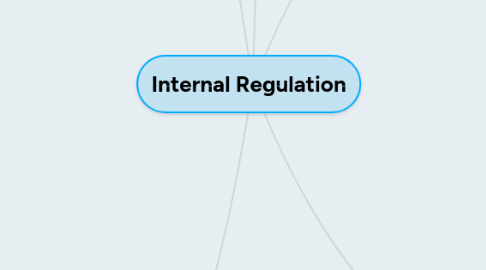
1. Hunger
1.1. The digestive system
1.1.1. Eating habits differ from lifestyles
1.1.2. Lactose intolerant
1.2. What makes us eat?
1.2.1. Short-term
1.2.1.1. Oral factors
1.2.1.1.1. Chewing & tasting not sufficient for satiety
1.2.1.2. Stomach & intestines
1.2.1.2.1. Stomach distension produces satiety -primary cue to stop eating
1.2.1.2.2. Satiety messages sent via vagus nerve & splanchnic nerves
1.2.1.3. Duodenum distension
1.2.1.3.1. 1st digestive site that absorbs big amount of nutrients
1.2.1.3.2. Limit eating
1.2.1.4. Glucose, insulin & glucagon
1.2.1.4.1. Glucose converted to glucagon (liver) or fat (fat cells) for storage
1.2.1.4.2. Prevents blood [glucose] from rising too quickly
1.2.1.4.3. Insulin helps glucose enter cells (low glucose & insulin = hunger)
1.2.1.4.4. After meal, glucose & insulin decrease > glucagon released to raise glucose levels - Hunger supressed
1.2.2. Long-term
1.2.2.1. Leptin
1.2.2.1.1. Released by fat cells
1.2.2.1.2. Signals your brain about fat reserves (enough fat, stop eating)
1.2.2.1.3. After each meals also release leptin (satiety)
1.2.2.1.4. Leptin levels high, eat less, more active, increase immunity
1.2.2.1.5. Triggers the onset of puberty
1.2.2.1.6. Leptin sensitivity decline during: - Pregnancy, hibernation & obese human
1.3. Neural eating mechanisms
1.3.1. Arcuate nucleus (controls appetite)
1.3.1.1. Separate sets of neurons sensitive to hunger & satiety signals
1.3.1.2. Damage to either one set can lead to starvation/overeating
1.3.1.3. Ghrelin- stimulates hunger (stomach contractions, increase appetite)
1.3.1.4. Nicotine, CCK, glucose, leptin stimulates satiety
1.3.1.5. Output from arcuate nucleus > paraventicular nucleus (PVN) > inhibit lateral hypothalamus (Double inhibition = excitation = increase eating)
1.3.1.6. Melanocortins (limit food intake) Orexin (increase motivation & persistence to find food)
1.3.1.7. Complex control of many chemicals but our brain have other mechanisms to compensate for it
1.3.2. Lateral Hypothalamus
1.3.2.1. Controls insulin secretion, taste responsivity & feeding
1.3.2.2. Stimulation: increase feeding Damage: starve if not force-fed
1.3.2.3. Many Dopamine fibers passing through, damage to LH interrupts these fibers
1.3.2.4. Send axons to spinal cord: autonomic responses such as digestive secretions
1.3.3. Ventromedial Hypothalamus
1.3.3.1. Inhibit eating
1.3.3.2. Damage leads to: 1. Eat normal sized meals, but frequently 2. Increased stomach motility (empties quicker) 3. Increased insulin: each meal is stored as fat, low glucose levels = hunger, keep eating 4. Still gain weight even if prevented from overeating due to increased fat storage
1.4. Eating disorders
1.4.1. Obesity
1.4.1.1. Environmental/ Mood/ Pre-natal factors (high fat pregnancy diet)
1.4.1.2. Genetics
1.4.1.2.1. Mutated gene for melanocortin (overeat)
1.4.1.2.2. Syndromal obesity result from medical conditions :Prader-Willi (short, obese, mental retardation due to high ghrelin)
1.4.1.3. Combined influences of gene & environment
1.4.1.3.1. Pima native hunters (gorging habits)
1.4.1.3.2. Mildly obese people more sedentary while obese & after weight loss
1.4.2. Anorexia nervosa
1.4.2.1. Fear of weight gain
1.4.3. Bulimia nervosa
1.4.3.1. Binge eating & compensatory behavior (vomit)
1.4.3.2. Addiction & substance abuse
2. Homeostasis
2.1. Maintenance of the body’s internal environment within a fixed range - negative feedback
3. Temperature
3.1. Basal metabolism
3.2. Poikilothermic & Homeothermic
3.3. Extreme cold kills
3.4. Advantages of constant high temperature
3.4.1. Movement readiness
3.4.2. 37°C
3.4.3. >41°C, proteins break down
3.5. Reproductive cells
3.5.1. need cooler ambiance
3.6. Neural temperature regulattion
3.6.1. POA/AH > Hindbrain's raphe nucleus > control shivering, sweating & blood flow to the skin
3.6.2. Infection > Deliver prostaglandins & histamines to POA/AH > Fever
3.6.3. POA/AH damage
3.6.3.1. Regulation via behavioral means
3.6.3.2. Can still detect temperature change
3.7. Why fever?
3.7.1. Bodily reaction (not something infection does to body)
3.7.2. Fight infection
3.7.3. Certain bacteria deactive/ weakened at high temperature
3.7.4. Immune system works better
3.7.5. >41°C life threatening
4. Thirst
4.1. Water regulation
4.1.1. Human
4.1.1.1. Posterior pituitary releases vasopressin (ADH) > Blood pressure increases (blood vessels constricted) > Kidney reabsorb water from urine > urine more concentrated
4.1.2. Animal
4.1.2.1. Excrement, unable to sweat, highly convoluted nasal passages (desert animals)
4.2. Osmotic thirst
4.2.1. Osmotic pressure
4.2.1.1. Semipermeable membrane (low to high concentration)
4.2.2. Eating salty food [Na+] > increased [Na+] outside of cells > osmotic pressure > draws water from inside to outside cell > shrinking cell
4.2.3. Neural mechanisms
4.2.3.1. Thirst receptors
4.2.3.1.1. 3rd ventricle: leakiest BBB area
4.2.3.1.2. OVLT & subfornical organ (SFO)
4.2.3.1.3. Stomach receptors
4.2.3.2. Receptors send input > supraoptic nucleus & paraventricular nucleus (PVN) > release ADH
4.2.3.3. Send input > Lateral preoptic area > controls drinking
4.2.3.4. Limit drinking: stomach & upper small intestine distension, swallowing rate
4.3. Hypovolemic thirst
4.3.1. Substantial body fluid lost (Difficulty pumping blood to head, nutrient flow distrupted)
4.3.2. How my body react?
4.3.2.1. Release vasopressin (ADH) & angiotensin II > constrict blood vessels > blood pressure increases
4.3.2.2. Angiotensin II also trigger thirst (lost salts & water)
4.4. Sodium specific hunger
4.4.1. Preference for salty foods due to low [Na+]
4.4.2. menstruation, sweated heavily
4.4.3. When body's sodium is low > adrenal glands release aldosterone > retain salt in kidneys, salivary
4.4.4. Aldosterone & angiotensin II change tongue receptors & pathway to increase salt intake
